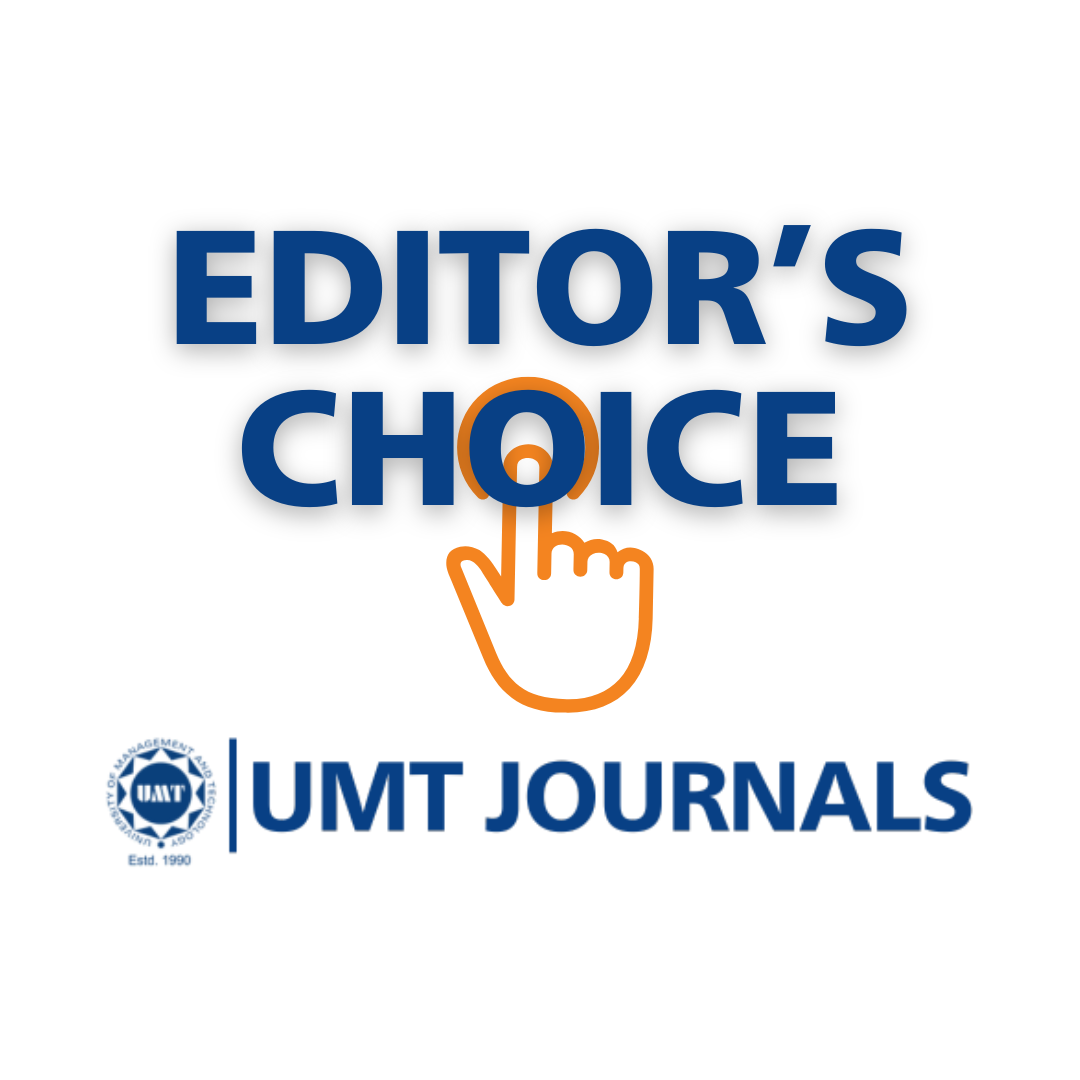Antibiotic Resistance Profiling of Bacteria Isolated from Hospital Wastewater in Multan
Abstract
 Abstract Views: 295
Abstract Views: 295
Resistance against antibiotics mainly due to their misuse and overuse is an emerging health issue, worldwide. Antibiotics release active antibiotic residues in the environment during their production. Bacteria encounter these active antibiotic residues and the genes present in them; resultantly, they acquire resistance against antibiotics. The current study was conducted to determine the prevalence of multidrug-resistant (MDR) bacterial strains, isolated from hospital wastewater. Using standard procedures, bacterial resistance patterns against different classes of antibiotics were analysed and their species level identification was made. The disc diffusion method was used to determine the bacterial activity against antimicrobial agents. Clear zones were measured separately in millimeters around each disc. Five wastewater samples were collected from different drainage regions of hospitals situated in Multan. A total of 45 bacterial strains were isolated. Out of these 45 bacterial strains, 13 (29%) were found resistant against two or more than two classes of antibiotics. All the bacterial strains (100%) isolated from samples 2 and 3 were MDR. Twenty-five bacterial strains (55.5%) belonged to the Bacillus species and others belonged to Enterococcus species, Micrococcus species, Staphylococcus species, and Streptococcus species, respectively. The presence of resistant bacterial strains in hospital waste demands the availability of effectual treatment plants to treat the waste before it is disposed of into hospital waste lines.
Downloads
References
Bouki, C., Venieri, D. and Diamadopoulos, E. Detection and fate of antibiotic resistant bacteria in wastewater treatment plants: a review. Ecotoxicology and Environmental Safety, 2013:1(91) 1-9.
Akin, B. S. Contaminant properties of hospital clinical laboratory wastewater: a physiochemical and microbiological assessment. Journal of Environmental Protection, 2016:7(05) 635-642.
Mustapha, A., Tijani, I., Bello, H. S. and Ismail, H. Y. Resistance Profiles of Bacteria Isolated from Wastewater in the University of Maiduguri Teaching Hospital. Journal of Biotechnology Research, 2016:2(7) 49-54.
Adesoji, A. T., Abubakar, F. and Ipinlaye, J. S. Occurrence of antibiotic resistant bacteria in faeces from abattoir waste, processing water and products from Dutsin-Ma, Katsina State, Nigeria. Journal of Bacteriology and Mycology, 2016:3(1) 1022.
Abrar, S., Riaz, S. Impact of putative bacteriocins against multidrug resistant clinical isolates. In Medical Forum. 2016:27(2) 28-32.
Bergey, D. H., Breed, R. S., Murray, E. G. D. and Hitchens, A. P. (1939). Manual of determinative bacteriology. Manual of determinative bacteriology. Fifth Edn.
Pandey, A., Afsheen, A. F. and Tiwari, S. K. Isolation and characterization of multi drug resistance cultures from wastewater. Journal Pharm. Biomed. Science, 2011:13(13) 1-7.
Aggarwal, A. A., Khan, I., Thareja, G., Gupta, K., Jain, R. and Diwan, P. Antibiotic Resistance Pattern in Bacterial Isolates Obtained from Different Water Samples of Delhi Region. Journal of Undergraduate Research and Innovation, 2015:1(3) 219-227.
Diwan, V., Chandran, S. P., Tamhankar, A. J., Stålsby Lundborg, C. and Macaden, R. Identification of extended-spectrum β-lactamase and quinolone resistance genes in Escherichia coli isolated from hospital wastewater from central India. Journal of Antimicrobial Chemotherapy, 2012:67(4) 857-859.
Raja, C. E., Selvam, G. S. and Omine, K. I. Y. O. S. H. I. Isolation, identification, and characterization of heavy metal resistant bacteria from sewage. International Joint Symposium on Geodisaster Prevention and Geoenvironment in Asia, 2009: 205-211.
Saha, A., Das, R., Dasgupta, M., Dutta, S., Haque, G. and Mitra, A. K. Isolation and Characterization of Multi Drug Resistant Pathogen from Soil Samples Collected From Hospital Disposal Site. Journal of Environmental Science, Toxicology and Food Technology, 2014: 8(5) 74-80.
Khan, G. A., Berglund, B., Khan, K. M., Lindgren, P. E. and Fick, J. Occurrence and abundance of antibiotics and resistance genes in rivers, canal and near drug formulation facilities–a study in Pakistan. PloS One, 8(6), e62712.
Yasmeen, S., Kabiraz, M. K., Saha, B., Qadir, M. R., Gafur, M. A. and Masum, S. M. Chromium (VI) ions removal from tannery effluent using chitosan-microcrystalline cellulose composite as adsorbent. International Research Journal of Pure and Applied Chemistry, 2016: 1-4.
Waseem, A., Arshad, J., Iqbal, F., Sajjad, A., Mehmood, Z. and Murtaza, G. Pollution status of Pakistan: a retrospective review on heavy metal contamination of water, soil, and vegetables. BioMed Research International, 2014: 1-5.
Langone, M., Petta, L., Cellamare, C. M., Ferraris, M., Guzzinati, R., Mattioli, D. and Sabia, G. SARS-CoV-2 in water services: Presence and impacts. Environmental Pollution, 2020: 115806.

Copyright (c) 2022 Saba Naeem, Iram Asim, Kashaf Junaid, Humaira Yasmeen

This work is licensed under a Creative Commons Attribution 4.0 International License.
BSR follows an open-access publishing policy and full text of all published articles is available free, immediately upon publication of an issue. The journal’s contents are published and distributed under the terms of the Creative Commons Attribution 4.0 International (CC-BY 4.0) license. Thus, the work submitted to the journal implies that it is original, unpublished work of the authors (neither published previously nor accepted/under consideration for publication elsewhere). On acceptance of a manuscript for publication, a corresponding author on the behalf of all co-authors of the manuscript will sign and submit a completed the Copyright and Author Consent Form.









